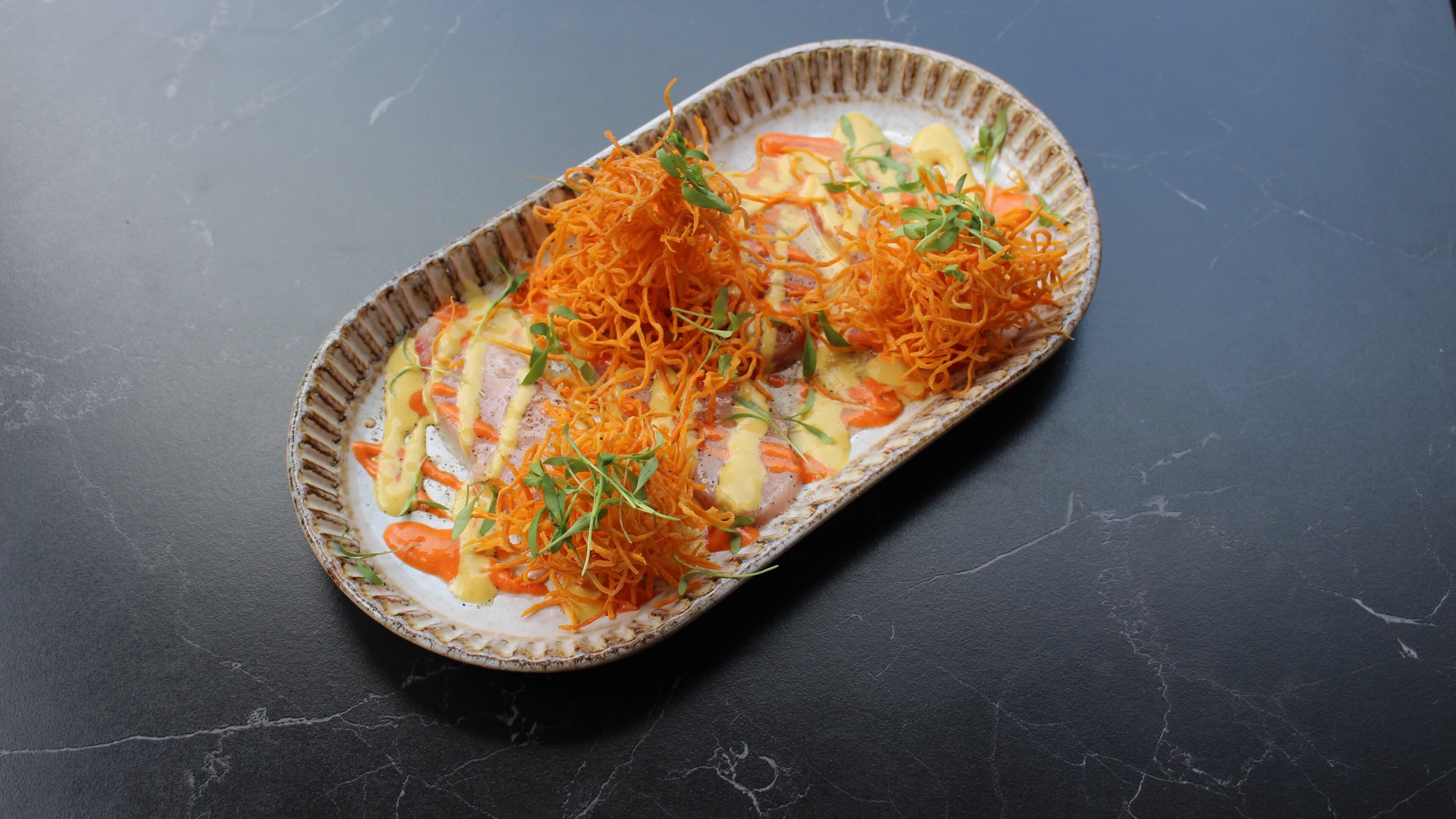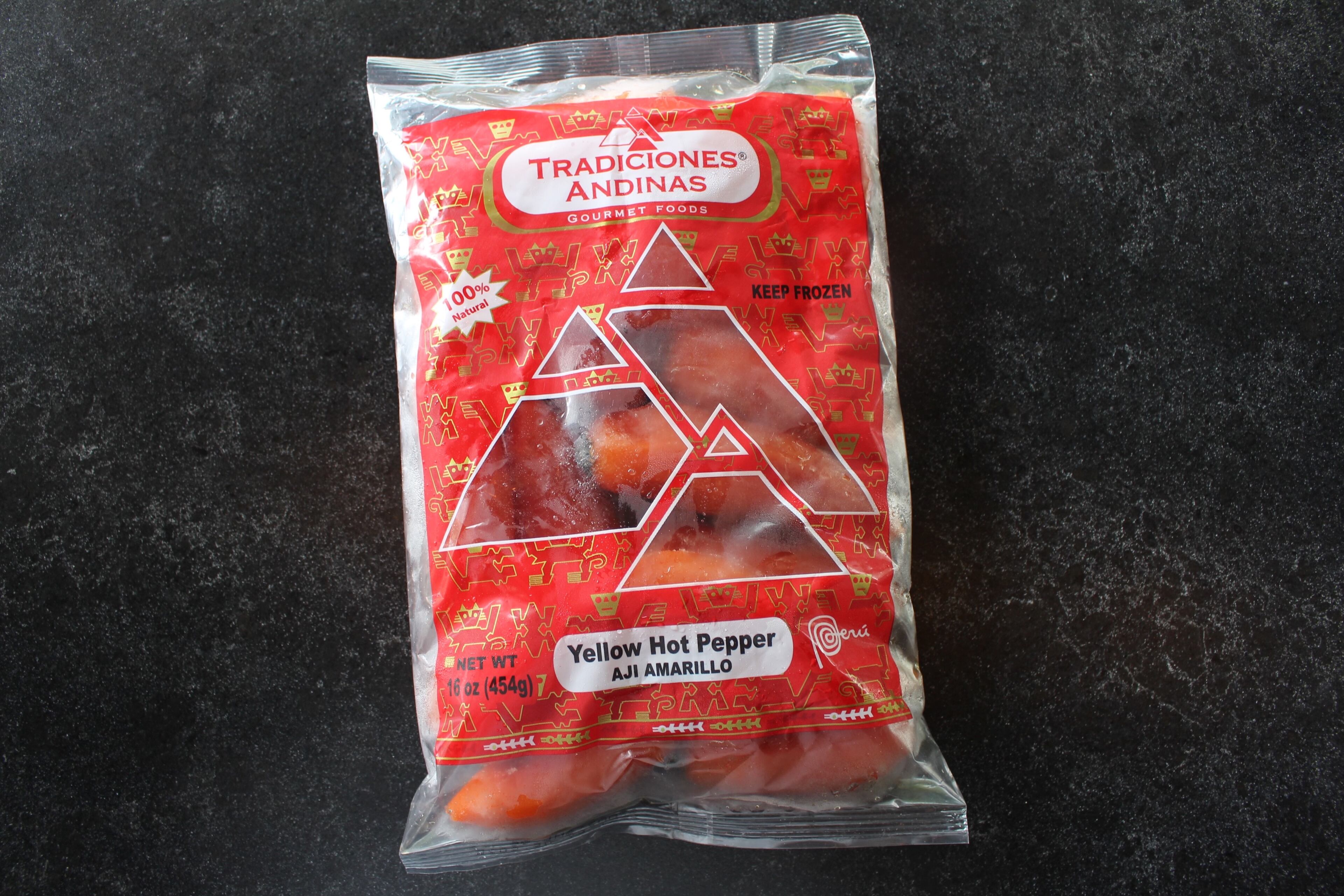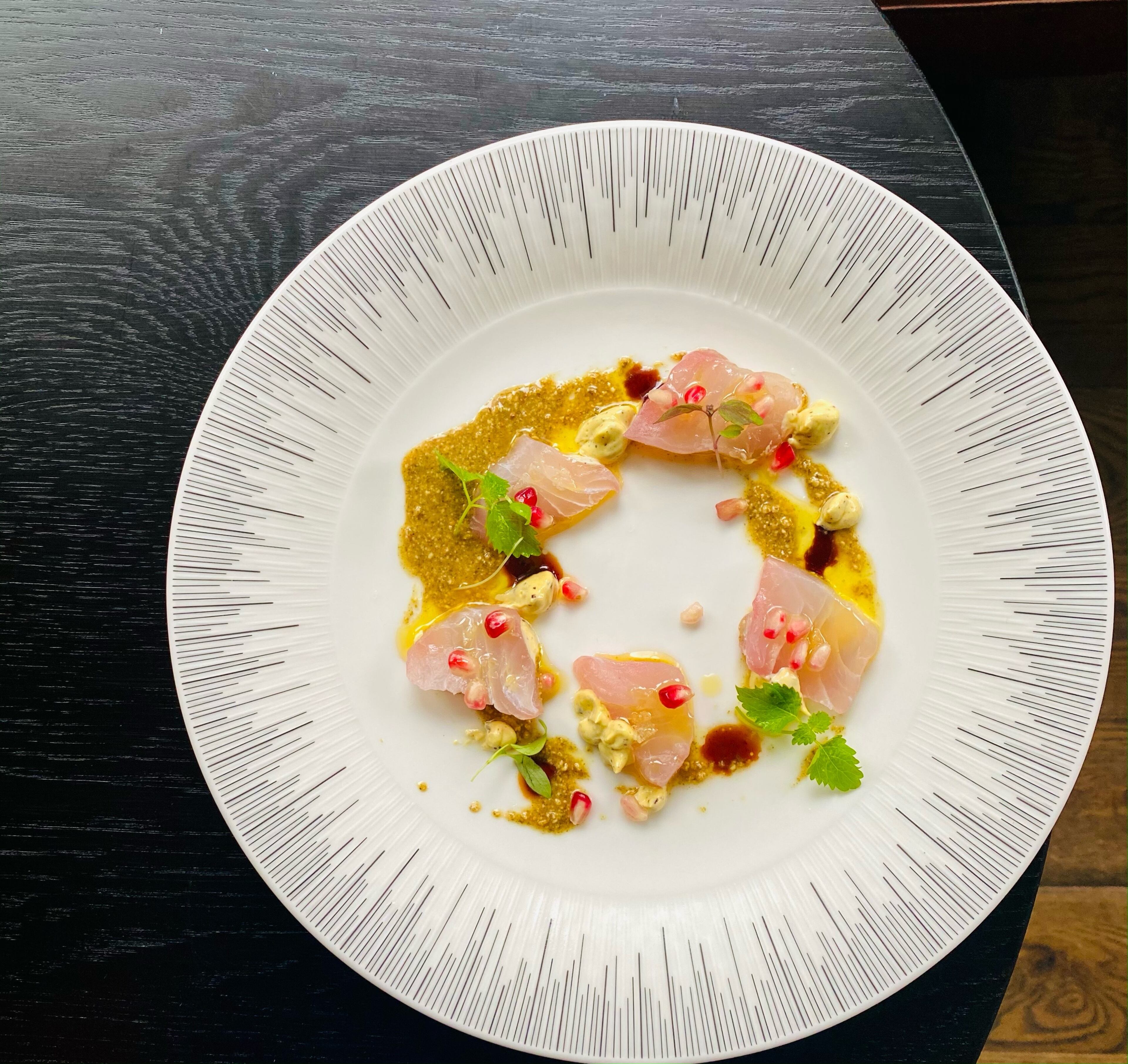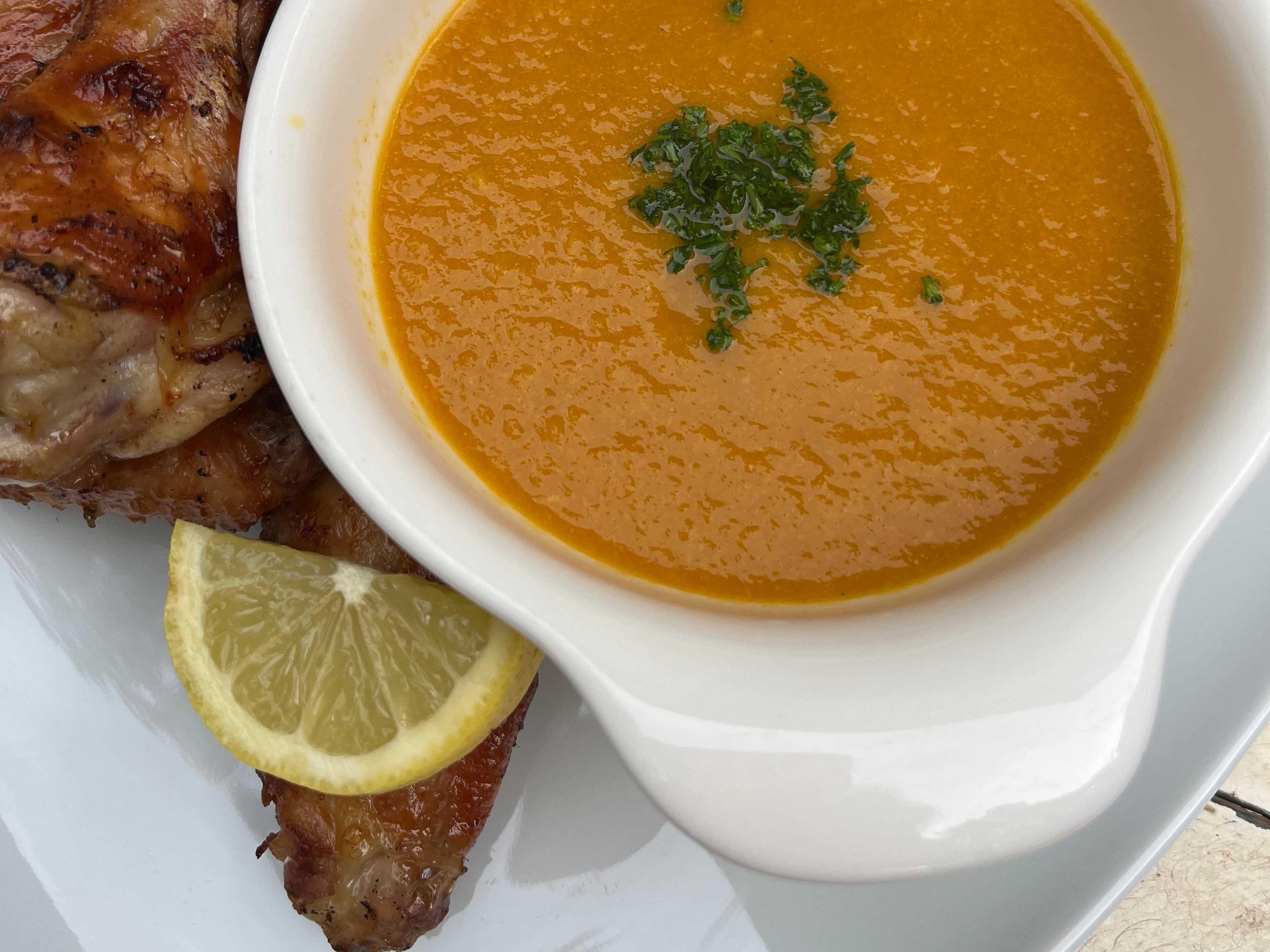From South American to Southern menus, this fruity, spicy chile is a hit

Gone are the days when cayenne and Tabasco peppers were the predominant source of spice on Southern tables. Now our meals are enlivened with a wide range of peppers, many, like the cayenne, native to Central and South America.
This year, the venerable seasoning purveyor McCormick put the focus on the peppers of Peru when they named their aji amarillo seasoning as the 2025 flavor of the year.
Aji amarillo (“yellow chile pepper”) is native to the Andes region of Peru and Bolivia. It’s one of a group of peppers that include aji rocoto, aji limo, aji panca and aji charapita, all of which combine a medium to hot level of heat with flavors reminiscent of mangoes and berries.
Diners will find aji amarillo on many Atlanta menus.
“Aji amarillo is probably the prize jewel of the bunch with its fruity flavor profile combined with heat. I consider it the pride of Peruvian cuisine,” said Jonathan Hartnett, owner of Decatur’s Peruvian restaurant Las Brasas.
He notes there is a lot of diversity in Peru and many cultures have adopted these peppers. “My mother is Peruvian and Japanese, and if you go to a sushi bar in Lima, they will be using aji amarillo.”
At Las Brasas, aji amarillo is used in a range of dishes, both savory and sweet. “We use it in our calamari and shrimp fritto for its tropical mango-like flavor. We blend it into our passion fruit cheesecake. We mix it with queso for sauces where we think it makes the flavors dynamic and complex. We use it in the sauce for our Papa a la Huancaina. We like using it because it’s a unique pepper that really works well for the American palate.”
Hartnett sources his peppers from Andean produce companies that bring in fresh peppers when they’re available.

Tiradito is a traditional Peruvian dish of thinly sliced raw fish served with a spicy sauce. Hamachi tiradito has been on the menu of Fogon and Lions since the restaurant opened in Alpharetta in 2022. “In Peru, the dish is swimming in very spicy sauce made with aji rojo and aji amarillo. We take a lighter hand with the sauces and make our aji amarillo sauce blending the peppers with a little bit of yellow mustard, some lime juice and olive oil,” said Julio Delgado, chef and owner. “Like most of my customers, I don’t like when there’s so much heat in a dish that it overpowers the food.”
The Fogon and Lions menu includes dishes from many countries influenced by Spanish cuisine. “We have a great diverse kitchen and one of my chefs is from Peru. He introduced me to aji amarillo and I fell in love with it,” said Delgado.
At Fogon and Lions, they also add aji amarillo to their Papa a la Huancaina, pairing the peppers with potatoes and lots of cream and butter. “It’s so good that you want to eat it even at room temperature. In September, we put it on our menu during our annual Rum-Ba Fest,” said Delgado.
Like Hartnett, Delgado appreciates aji amarillo for the fruity flavor, which he also likens to mango and passion fruit. The restaurant sometimes sources fresh aji amarillo at the Buford Highway Farmers Market and often buys the roasted peppers they find there.

Craig Richards, chef and owner of Midtown’s Lyla Lila, was introduced to aji amarillo while working as an interim chef at the Optimist. “They had jars of the paste, and when I sampled it, I found it had an arresting flavor, very spicy right up front,” said Richards.
It’s not an ingredient that’s always in rotation at the Italian-influenced Lyla Lila, but Richards says it’s always in his pantry and he revisits it every once in a while. One dish he created with aji amarillo was a snapper crudo served with pumpkin seed butter, pomegranate seeds and a dulse-aji amarillo aioli. He finds that using the pepper in an aioli is a great way to let the flavor shine while mellowing the heat.
“It’s one of those peppers that hits you right away on the tip of your tongue. It has a bit of acidity to it, and we’re always looking for acidity to go with raw fish preparations. It has a little deeper depth of flavor than a Calabrian chile, which would be a more typical Italian ingredient. It’s an interesting way to use a unique ingredient,” said Richards.
Lance Gummere of East Atlanta’s Mercer Street Meals became intrigued with the flavors of Peru when his son spent a week there one summer. “He kept telling me it was the most amazing country with the most amazing food he’d ever experienced,” said Gummere.
When Gummere was on a recent shopping trip at the Buford Highway Farmers Market, he found bags of fresh aji amarillo in the produce section. Intrigued by his son’s stories of Peru, he purchased a bag. He washed, stemmed and seeded the peppers and made hot sauce with what he calls the easiest recipe in the world. “You literally boil the ingredients and then puree. That thing was fire. It will light you up! You could definitely temper it with mayo to make a dipping sauce,” said Gummere. He shares the recipe for his grilled chicken wings with aji amarillo hot sauce below.
He recommends the wings as patio party food for friends who are adventurous. “The color is amazing, especially when people are used to hot sauces being green or red. When they see something yellow, it really stands out. And past the heat, there’s a very pleasant fruity aftertaste. I think it would be great for hot fried chicken,” Gummere added.

Lance Gummere’s Chicken Wings with Aji Amarillo Hot Sauce
Lance Gummere of Mercer Street Meals offers a summer-friendly way to enjoy the taste of aji amarillo.
- 2 pounds chicken wings, cut into drums and flats
- Diamond Crystal kosher salt and pepper
- Vegetable oil for oiling grates
- Lance Gummere’s Aji Amarillo Hot Sauce (see recipe), for dipping
- Sprinkle wings with salt and pepper on all sides.
- Heat grill to 350 degrees. When grill is hot, lightly oil grill grates.
- Arrange wings on grill and cook 5 minutes, then turn and cook 5 minutes more or until wings reach an internal temperature of 165 degrees.
- Remove from grill and arrange on plate with bowl of Lance Gummere’s Aji Amarillo Hot Sauce.
Serves 4.
Per serving, with 1/2 teaspoon kosher salt total (without Aji Amarillo Hot Sauce): 464 calories (percent of calories from fat, 65), 40 grams protein, trace carbohydrates, trace total sugars, trace fiber, 33 grams total fat (9 grams saturated), 252 milligrams cholesterol, 331 milligrams sodium.
Lance Gummere’s Aji Amarillo Hot Sauce
Look for fresh aji amarillo peppers at the Buford Highway Farmers Market. As when handling any hot peppers, consider wearing gloves to protect your skin and always be certain not to touch your eyes until you have washed your hands thoroughly.
- 2 cups fresh aji amarillo peppers, stems and seeds removed
- 1 3/4 cups water
- 1/4 cup diced yellow onion
- 1/4 cup white vinegar
- 2 tablespoons chopped garlic
- 1 1/4 teaspoons Diamond Crystal kosher salt
- In a medium saucepan, combine peppers, water, onion, vinegar, garlic and salt. Bring to a boil over high heat, then reduce to medium-low and simmer 15 minutes. Remove saucepan from heat and allow to cool slightly.
- In the jar of a blender, process peppers and liquid until smooth.
- Store sauce refrigerated in a covered container for up to 1 week.
Makes 3 cups.
Per teaspoon: 1 calorie (percent of calories from fat, 7), trace protein, trace carbohydrates, trace total sugars, trace fiber, trace fat (trace saturated fat), no cholesterol, 10 milligrams sodium.
Sign up for the AJC Food and Dining Newsletter
Read more stories like this by liking Atlanta Restaurant Scene on Facebook, following @ATLDiningNews on X and @ajcdining on Instagram.


